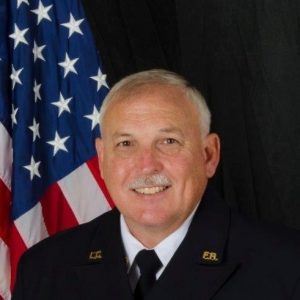Through a recent partnership between the International City/County Management Association (ICMA) and the Center for Public Safety Excellence (CPSE), the 21st Century Fire and Emergency Services white paper was produced.
The goal of the white paper was to have active city/county management and fire department subject matter experts come together to evaluate the current status of the Fire Service in order to lay out a path for the future.
The white paper identifies eight critical issues deemed necessary for the future survival of the Fire Service. They are:
- Re-Identification
- Culture
- Robust Use of Data
- Health and Wellness
- Partnerships
- Sustainability
- Technology
- Inclusiveness
The Cancer Threat in the Fire Service
Regarding the topic of health and wellness, the Fire Service has long been aware that cancer is an occupational hazard which has taken a toll on many members, both career and volunteer.
Between 2002-2019, the International Association of Firefighters (IAFF) reports that 66 % of career firefighter deaths were related to cancer. A firefighter today is at a 9%higher risk of being diagnosed with cancer and a 14%higher risk of dying from cancer than the general population. The Firefighter Cancer Support Network (FCSN) classifies cancer as the most dangerous threat to firefighter safety and health today.
Over the last decade, the revelation of the many of types of cancer among firefighters has resulted in more awareness education and a focus on prevention and mitigation behaviors. The Fire Service is now better informed of the hazards of combustion by-products and the means by which to reduce exposures, both on the fireground and in the station than at any time in the past.
With reference to the latter, this includes an awareness of the carcinogenic properties of diesel exhaust and the acquisition and use of exhaust capture systems to prevent or limit exposure. Diesel exhaust is now linked to many cancers, to include multiple myeloma, non-Hodgkin’s lymphoma, skin cancer, malignant melanoma, brain cancer, prostate cancer, colon cancer, testicular cancer, and leukemia.
The white paper demonstrates that the cancer problem in the Fire Service is more than a Fire Service problem. The toll that cancer takes on a firefighter is not limited to the physical suffering of the patient and the emotional affects upon families and friends. The costs associated with cancer treatment are enormous, as various sources estimate an average cost of $150,000 to a firefighter with cancer (often times much higher), and in many instances state or local government bears the burden of cost should the cancer be linked to on-the-job activities.
Cancer in the Fire Service should be viewed as a community problem, whose solutions must incorporate government at the highest levels, using new and existing partnerships, improved data tracking mechanisms, and the best technology available.
ABOUT THE AUTHOR:  Loudoun County, Virginia System Fire Chief (Retired) W. Keith Brower, Jr. has dedicated his 45 year career to the professionalism of the nation’s fire service with an emphasis on prevention related topics. While fire prevention has been his main area of interest, his passion has expanded toward overall community risk reduction (CRR), viewing it as the key to reducing firefighter deaths and injuries. Chief Brower was selected as the Virginia “Career Fire Chief of the Year” in 2018 for his staunch support of legislation for improved fire prevention codes and residential fire sprinklers. He also served on the Virginia State Building Code Technical Review Board. At present, Chief Brower serves as a steering committee member on Project Vision 20/20 and does special projects for several entities in the areas of firefighter safety and health.
Loudoun County, Virginia System Fire Chief (Retired) W. Keith Brower, Jr. has dedicated his 45 year career to the professionalism of the nation’s fire service with an emphasis on prevention related topics. While fire prevention has been his main area of interest, his passion has expanded toward overall community risk reduction (CRR), viewing it as the key to reducing firefighter deaths and injuries. Chief Brower was selected as the Virginia “Career Fire Chief of the Year” in 2018 for his staunch support of legislation for improved fire prevention codes and residential fire sprinklers. He also served on the Virginia State Building Code Technical Review Board. At present, Chief Brower serves as a steering committee member on Project Vision 20/20 and does special projects for several entities in the areas of firefighter safety and health.
